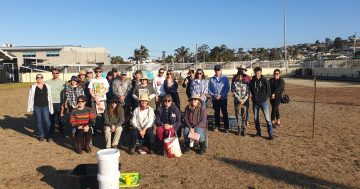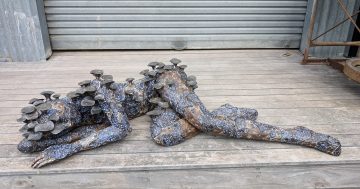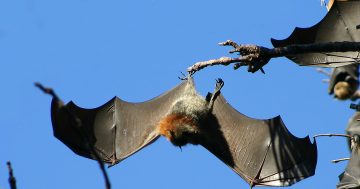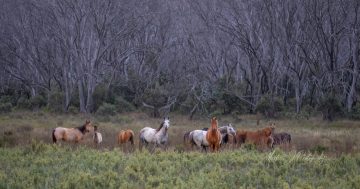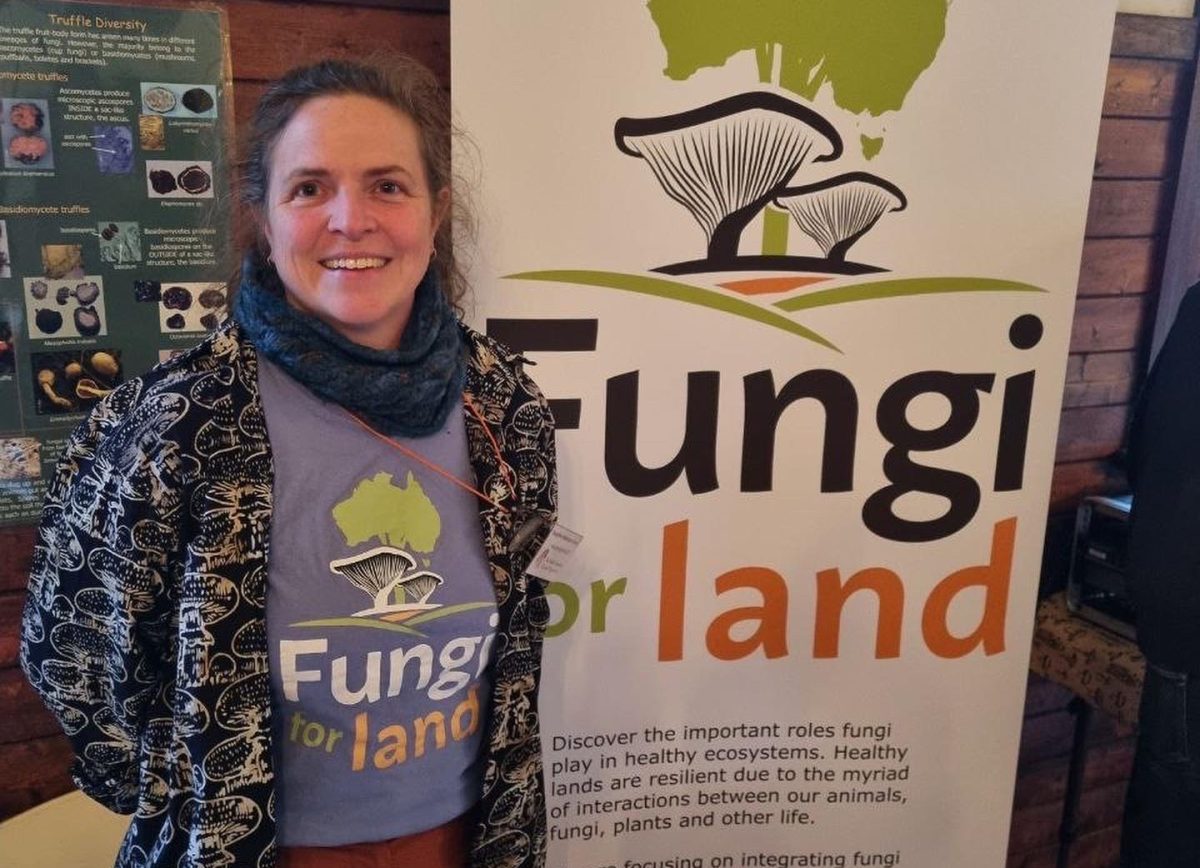
Internationally recognised fungi specialist Dr Sapphire McMullan-Fisher is visiting the Far South Coast as part of the Fungi Feastival. Photo: M de Graf.
Australia’s fungi are as unique, weird and wonderful as its plants and animals. They have been and remain critical to plants adapting to Australia’s landscape.
Internationally recognised fungi expert Dr Sapphire McMullan-Fisher says Australia has a much greater diversity of fungi than America or Europe because it has such ancient soils. It is far easier for plants to flourish in young fertile soils so they have less need for fungi.
“In harsh environments, though, you get more different species of fungi that help other organisms to survive so we have huge diversity because of our harsh landscapes,” she says.
Dr McMullan-Fisher has a particular interest in conserving Australia’s fungi. That is no easy task. There is only one mycologist, or mushroom expert, to about every 100 botanists and it can take decades to identify a species and even longer to list it as threatened. Consequently, only a fraction of Australia’s fungi are documented and listed. That makes accessing conservation funding difficult.
Dr McMullan-Fisher has studied fungi for decades and spends every fungi season possible travelling across the country to grow knowledge of the amazing breadth of diversity in wetlands, forests and bush. She has been following a mushroom in Queensland for nearly 20 years. Even the genus of the sticky orange with its deep burnt-orange hue is uncertain.
“Scientists want two different collections from two different places but this is a fungus I have only ever found in one site,” she says.
Other fungi followers post pictures of sticky orange on Facebook but they are all from the same location.
“I am waiting for the magic day someone posts a photo of it from a different location and then I’ll go there with my DNA kit and name a new species,” Dr McMullan-Fisher says.

Dr Sapphire McMullan-Fisher spends considerable time in the field photographing Australia’s fungi and understanding their partnerships with plants and animals. Photo: Dr Sapphire McMullan-Fisher.
She became hooked on the wonders of Australia’s landscape when she discovered the connections between mountain ash forests and the creeks that often have rainforest remnants capturing and holding water in the ecosystems.
“Within metres you can feel the difference in moisture,” she says. ”You have one foot in the eucalyptus environment and another in the damp creek. That was the magic that drew me into the field trips, walking across the land and finding these treasure troves of moisture.”
Most plants rely on fungi that grow on their roots. Mycorrhiza describes the symbiotic relationship between those fungi and the plant whereby the fungi provide nutrients in return for sugar from the plant. Shrubs and trees have multiple relationships.
“Roots on plants are relatively simple because they have fungi partners,” Dr McMullan-Fisher says.
The 5 per cent of terrestrial plants that do not have these partnerships have quite complicated root structures. That is why proteas, banksias and grevilleas are so sensitive to any disturbance to their roots.
Because of the plentiful botanists, the diversity of Australia’s plants is the best known after its vertebrates. The much smaller group of mycologists have several challenges. Before molecular technology arrived, it took decades to fully understand a new fungi such as any plants or animals it partners with.
“Now we get to know what our fungi are in five to 10 years instead of waiting decades,” Dr McMullan-Fisher says.
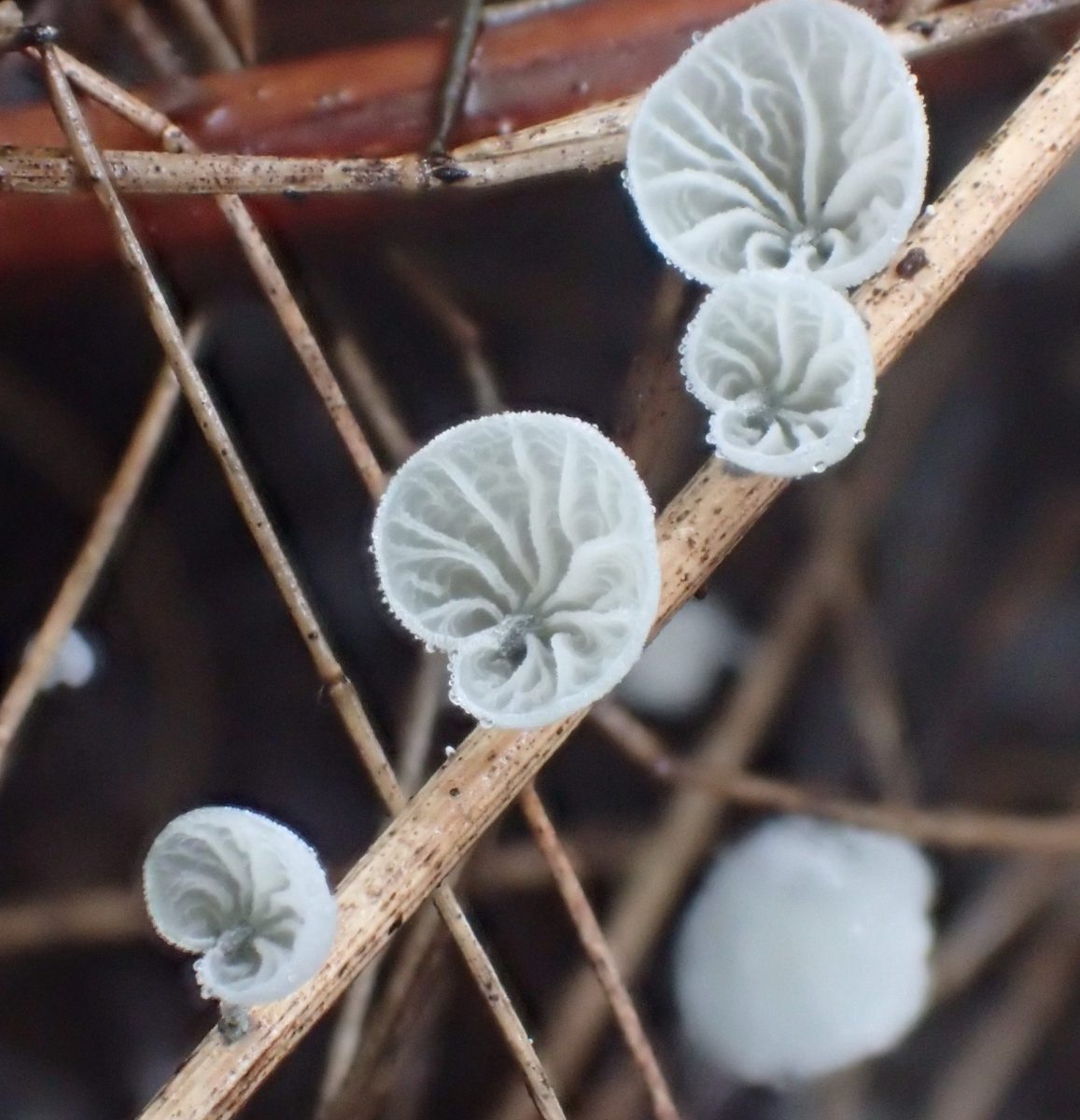
There are many species in the fungi genus of campanella. Photo: Dr Sapphire McMullan-Fisher.
Like plants and animals, fungi are threatened by climate change and land clearing. However, the process to get a fungus documented is bureaucratic. Mycologists have been working on conservation actions rather than making time to have the critically endangered Tea-tea Fingers federally listed.
“There are so few fungi listed that you cannot access most conservation money,” Dr McMullan-Fisher says. “We have had more money on community engagement because local communities need to know the local threatened species so they can protect them.”
Dr McMullan-Fisher travels around Australia adding to communities’ knowledge about the fungi treasures in their backyard that need to be conserved. She explains the need to avoid excessive hazard-reduction burns in conservation areas. Australia’s fungi of the Gondwana are threatened but the number of species at risk is unknown.
“We have been working for the same 200 years as botanists but because there are 100 botanists to every mycologist, we are years behind,” she says. ”Plants aren’t that diverse, whereas fungi and insects have huge diversity and much less people studying them.”
As part of the Fungi Feastival, in Cobargo on 5 July Dr McMullan-Fisher will talk about what fungi do for Australia’s iconic bushland. Also, she will conduct two 90-minute fungi forays at Eurobodalla Regional Botanical Gardens on 6 July and two in the Bega Valley on 7 July.






